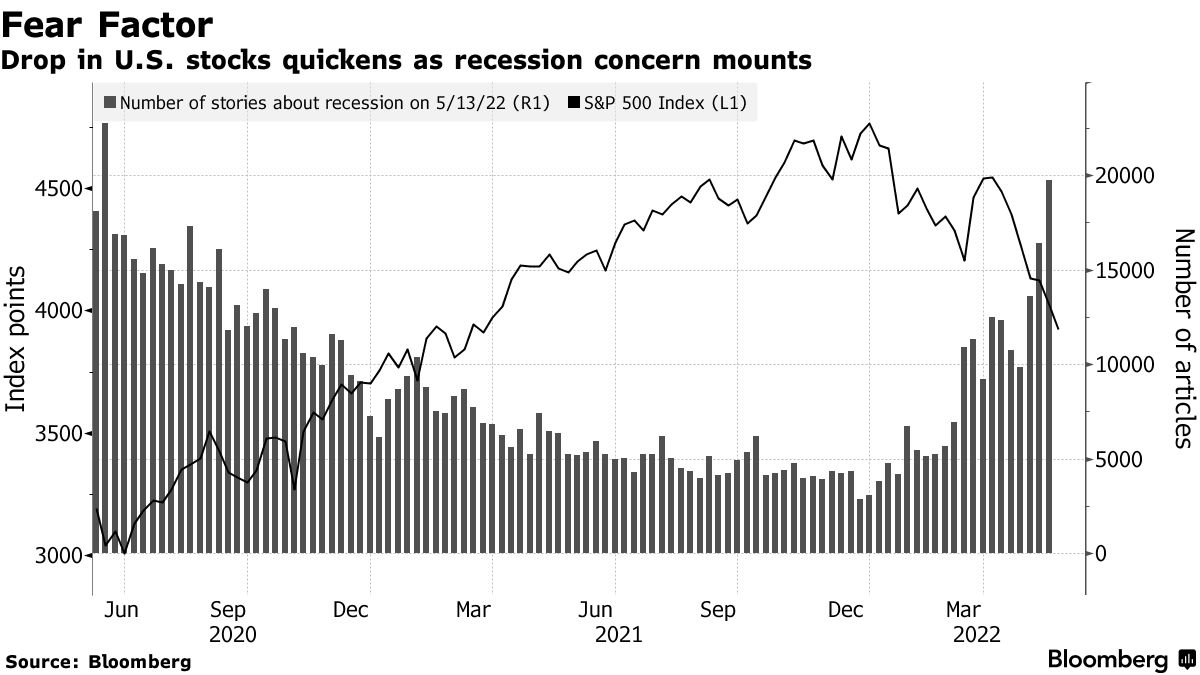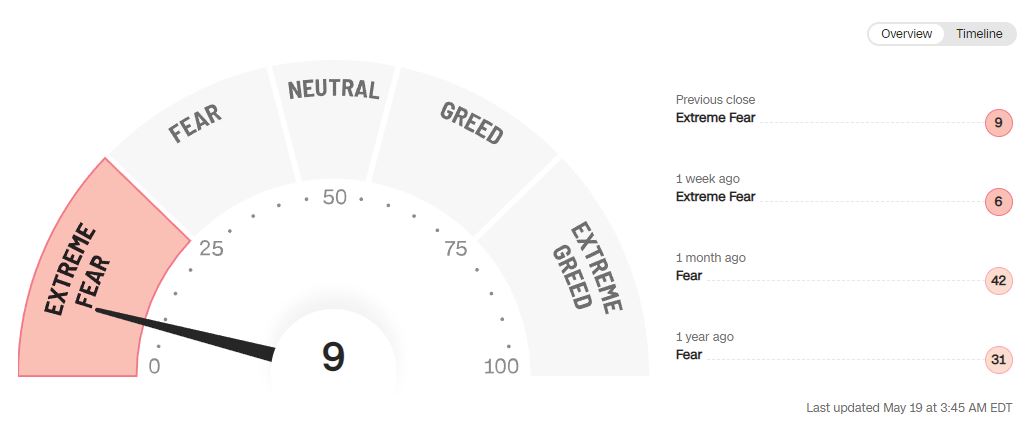Indicator #1: AAII Investor Sentiment Survey
The American Association of Individual Investors (AAII) is an independent, nonprofit organization founded in 1978 to help individuals become effective managers of their own savings and assets.
The AAII Sentiment Survey, conducted weekly, provides insight into the opinions of individual investors by asking them what they think about the direction of the market over the next six months, and has been doing so since 1987.
The results of the latest survey show that neutral sentiment is rebounding after hitting an 18-month low last week. In addition, optimism continues to be unusually low and pessimism continues to be unusually high
.

We are on record lows, at least since 1999.
.

Indicator #2: Fear Index in the newspapers
The number of articles suggesting a recession is only going up while the U.S. broad index S&P 500 is falling. In fact, the recession scenario seems to be widely accepted by fund managers.
Although the number of articles mentioning a recession is increasing, it is mostly related to the financial media and not yet to the mainstream media.
.

Source: Bloomberg
Indicator #3: Fear and Greed Index
CNN Business' Fear and Greed Index is in the extreme fear zone (at 9/100 on 5/19/2022). The theory is based on the logic that too much fear tends to drive down stock prices, and too much greed tends to have the opposite effect. This indicator can also be used in a contrarian way to buy fear and sell greed. The hardest part is to find the right timing.
.

This indicator is based on 7 criteria to determine the market sentiment (here the S&P 500) at a given time: market momentum, relative strength of market prices, volume, put/call options ratio, volatility, demand for safe haven assets and demand for junk bonds.
- Market momentum is measured based on the price positioning of the S&P 500 Index relative to its 125-day moving average.
- Relative market price strength is measured by looking at the number of NYSE-listed stocks making new highs versus the number of stocks making new lows at 52 weeks.
- Volume is measured using the McClellan Volume Summation Index, which calculates the amount and volume of shares going up versus the number of shares going down.
- Put/call options ratio: Options are contracts that give investors the right to buy or sell stocks, indices, or other financial securities at an agreed upon price and date. When the ratio of puts to calls increases, it is usually a sign that investors are becoming more nervous. A ratio greater than 1 is considered bearish. The best known measure of market sentiment is the CBOE Volatility Index (or VIX).
- The VIX measures the expected price movements or volatility of S&P 500 options over the next 30 days. The VIX index often falls on days when the broader market rallies and soars when stocks plunge. But the key is to look at the VIX over time. It tends to be lower in bull markets and higher when bears are in charge.
- Demand for Safe-Haven Assets: In theory, stocks are riskier than bonds. But the reward of investing in stocks over the long term is greater. Bonds can outperform stocks over short periods of time, especially during market downturns. Bond demand shows the difference between Treasury bond yields and stock yields over the last 20 business days. Speculative bond demand is measured by looking at the spread between speculative bond yields and safer government bonds. A wider spread indicates greater caution.
While fear is very much present and we could see a strong rebound (a contrarian strategy to these fear indicators), the consensus is moving towards a target price around 3500 points on the S&P 500. Caution is required (macro approach) although real opportunities are beginning to appear all over markets (micro viewpoint).

 S&P 500
S&P 500  By
By 









